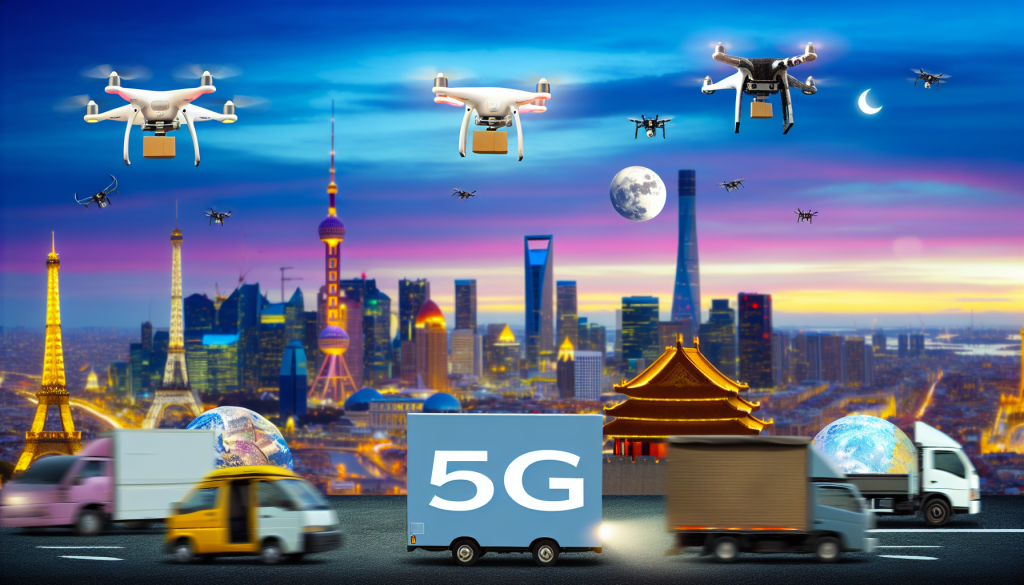Exploring the 5G Drone Delivery Services Market: A Deep Dive into Future Innovations
Introduction to 5G Drone Delivery Services
The rise of drone technology has significantly transformed logistics and delivery services. The advent of 5G technology has further accelerated this evolution, enabling unprecedented speed and efficiency. This article delves into a recent comprehensive study on the Global 5G Drone Delivery Services Market, exploring key insights into market trends, challenges, and future growth projections.
What Are 5G Drone Delivery Services?
At its core, 5G drone delivery services leverage ultra-fast, low-latency 5G networks to operate unmanned aerial vehicles (UAVs) for the rapid and autonomous delivery of goods. These services enhance logistics efficiency, slash delivery times, and enable real-time monitoring of drone operations. Expected to revolutionize various sectors—particularly e-commerce, healthcare, and food distribution—5G-enabled drones promise seamless integration into both urban and remote supply chains.
Market Growth Projections
According to the HTF Market Intelligence report, the global market for 5G drone delivery services is poised for significant growth. Projected to expand at a staggering compound annual growth rate (CAGR) of 20.50% from 2025 to 2032, the market is expected to balloon from $2.4 billion in 2025 to $7.1 billion by 2033. This rapid escalation highlights the burgeoning demand for efficient delivery solutions, particularly in the wake of an e-commerce boom.
Key Market Segmentation
The report categorized the market into various segments, providing insight into its diverse applications:
Types of Drones
- 5G-enabled Drones: Designed specifically to harness the capabilities of 5G technology.
- Autonomous Delivery Drones: These operate without human intervention, leveraging advanced AI algorithms for navigation.
- Smart Logistics Drones: Focused on improving supply chain efficiency.
Applications
- E-commerce Delivery: Offering a swift solution for online retailers aiming to enhance customer satisfaction.
- Medical Supplies: Critical for rapid deployment in healthcare settings, particularly in emergencies.
- Food Delivery: Aimed at restaurants and food services looking to meet consumer demand for quick service.
- Last-Mile Logistics: Bridging the gap between distribution centers and end consumers.
- Urban Air Mobility: Exploring the potential of drones in urban transport.
Regional Insights
The report identifies North America as the dominating region due to its advanced technological infrastructure and regulatory frameworks that support drone operations. Meanwhile, the Asia-Pacific region is recognized as the fastest-growing, spurred by investments in smart city initiatives and e-commerce growth.
Emerging Market Trends
Several trends are shaping the future of the 5G drone delivery services market:
- Integration with AI: The pairing of AI-driven flight path optimization with 5G capabilities enhances efficiency and route planning.
- Partnerships: Collaborative ventures between telecom operators and logistics firms are becoming commonplace, facilitating the integration of drone technology into existing logistics frameworks.
- Increased Accessibility: Drones are increasingly being utilized in rural and disaster-prone areas, providing vital supplies where conventional transport methods may falter.
- Regulatory Enhancements: The evolving landscape of UAV traffic management regulations is adapting to the growing market.
Key Market Drivers
Several factors are propelling the demand for 5G drone delivery services:
- E-commerce Expansion: The boom in online shopping has heightened the need for swift delivery options.
- Advancements in Connectivity: The rise of 5G technology enables seamless drone coordination in real-time.
- Post-Pandemic Demand: A growing preference for contactless delivery solutions has accelerated market adoption.
Challenges Facing the Market
Despite its potential, the 5G drone delivery services market faces several barriers:
- Regulatory Constraints: Compliance with existing airspace regulations poses significant challenges.
- Safety and Privacy: Concerns regarding public safety and data privacy continue to hinder adoption.
- Infrastructure Gaps: Limited facilities for drone maintenance and charging can restrict operational reach.
- Weather Dependency: Weather conditions can adversely affect delivery schedules and reliability.
In-Depth Market Analysis
The study’s comprehensive analysis underscores the importance of understanding market dynamics:
- Competitive Landscape: Major players, including Amazon Prime Air, Wing (Alphabet), and UPS Flight Forward, are vying for market share.
- Strategic Collaboration: The importance of partnerships and alliances in navigating the regulatory landscape cannot be overstated.
- Five Forces & PESTLE Analysis: These analytical frameworks reveal critical insights into market conditions, identifying both opportunities and threats.
Customization and Further Research
For businesses seeking tailored insights, HTF Market Intelligence offers customized reports based on specific regions or market segments. This personalized approach enables organizations to adapt to unique challenges and opportunities within their respective markets.
Conclusion
The 5G Drone Delivery Services Market stands at the cusp of a revolutionary transformation in how goods are delivered. As technology evolves and demand rises, understanding market dynamics will be key for businesses aiming to harness the potential of drone logistics.
For those interested in exploring this burgeoning market further, HTF Market Intelligence offers extensive resources—ranging from comprehensive reports to specific analyses tailored to individual business needs.

